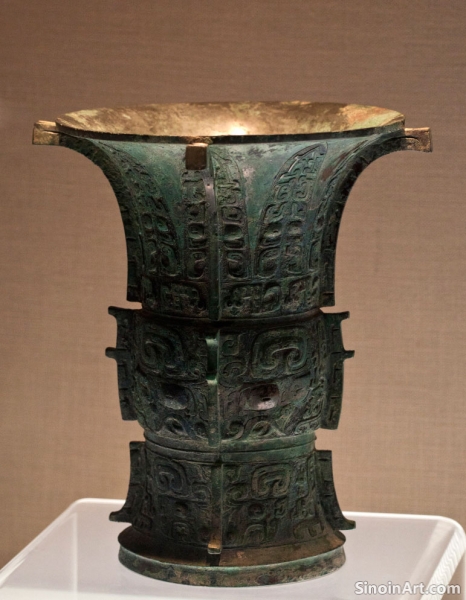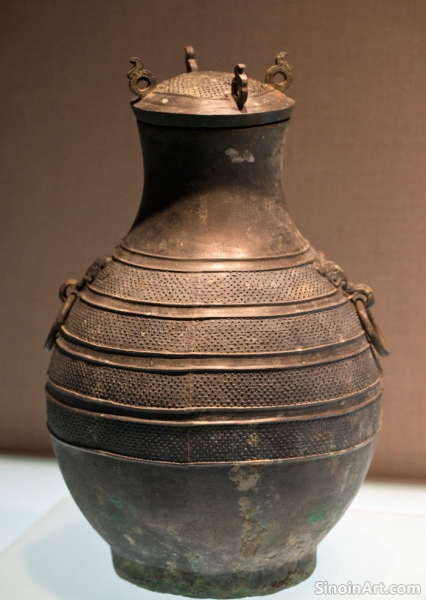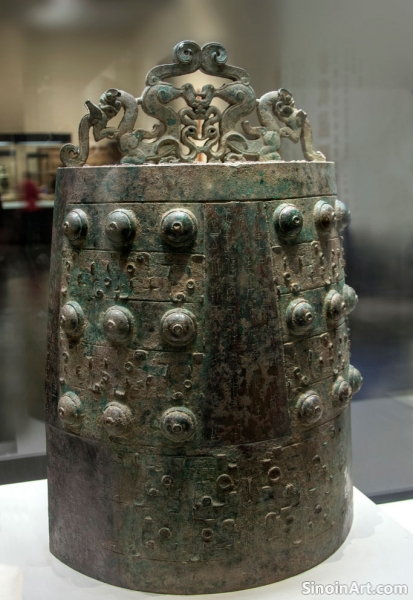Bronze Ware as Grave Goods: Status, Belief, and the Afterlife
|
The practice of burying bronze ware with the deceased was a widespread tradition in ancient China, reflecting the belief that these objects would accompany them into the afterlife. The types of bronze objects included, their quantity, and the manner in which they were placed in tombs reveal insights into the social status, religious beliefs, and notions of the afterlife. The inclusion of bronze pieces in burials was an essential component of ancient Chinese traditions.  Ritual vessels, weapons, and other types of bronze objects were often included as grave goods, suggesting that they were seen as necessary items for use in the afterlife. The inclusion of these items suggests that life in the afterlife was expected to be similar to that on Earth. The items were often selected based on the status and personality of the deceased.  The quantity and quality of bronze objects found in tombs often varied depending on the social status and wealth of the deceased, with rulers and nobles having significantly more and more elaborate grave goods. The amount and types of artifacts included in burials were direct indications of the status and position held by the deceased during their lifetime. This highlights the use of these materials as a display of wealth and power.  The placement of bronze objects within tombs was also highly significant, often reflecting specific ritualistic beliefs about the afterlife. The care with which these items were arranged is further evidence of their symbolic importance. The study of bronze ware as grave goods provides important insights into the social hierarchy and spiritual beliefs of ancient China, revealing the complex ways in which the living sought to prepare their loved ones for the world beyond death. The careful study of burial sites helps to provide us with insights into the culture and beliefs of the people who lived long ago. The integration of these materials into the funerary process is key to understanding the beliefs of the era. |
Tag : bronze grave goods, ancient Chinese burials, afterlife beliefs, funerary rituals, archaeology
Related information
- The Use of Bronze in Ancient Chinese Medicine: Exploring the Relationship Between Materials and Healing
- Bronze Vessels as Symbols of Ancestral Veneration: Connecting the Living and the Dead
- Bronze Ware and Ancient Chinese Law: Authority, Justice, and Codification
- Bronze Ware and Ancient Chinese Concepts of the Afterlife: Journey, Protection, and Eternity
- Bronze Mirrors and the Concept of "Face" in Ancient Chinese Society: Identity and Social Status
This article explores the use of bronze in ancient Chinese medicine, highlighting the belief that the material itself possessed healing properties, and how it was used in creating vessels for preparing remedies, and in some therapeutic practices.
This article explores the use of bronze vessels in ancestral veneration in ancient China, highlighting their role in connecting the living and the dead, honoring family lineages, and emphasizing the core values of ancestor worship.
This article explores the use of bronze in ancient Chinese law, highlighting its role in codifying legal principles, disseminating decrees, and symbolizing judicial authority, revealing the interconnectedness of law, power, and material culture.
This article explores the role of bronze ware in ancient Chinese funerary practices, highlighting the use of these objects to prepare the deceased for their journey into the afterlife, providing protection and ensuring their continued well-being in the spirit world.
This article explores the connection between bronze mirrors and the concept of "face" (mianzi) in ancient China, highlighting how mirrors were used to manage social image, convey respect, and reflect the importance of social status both in life and after death.